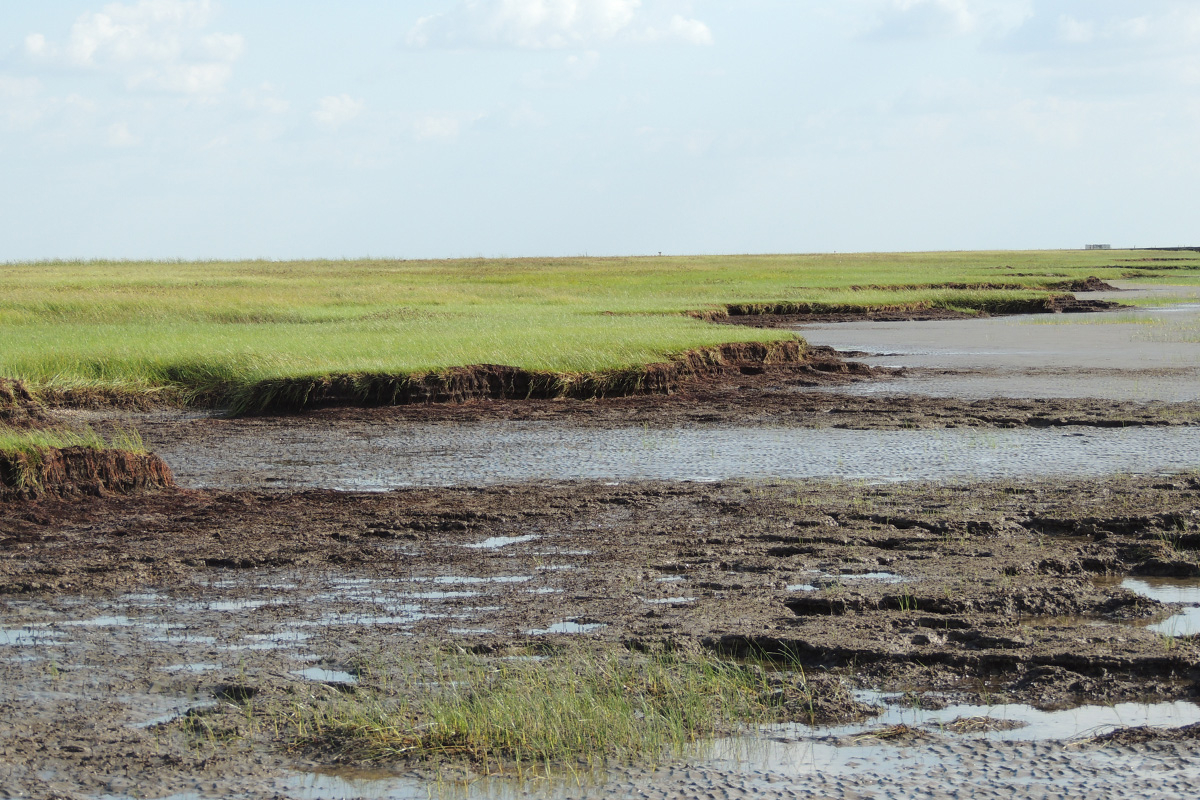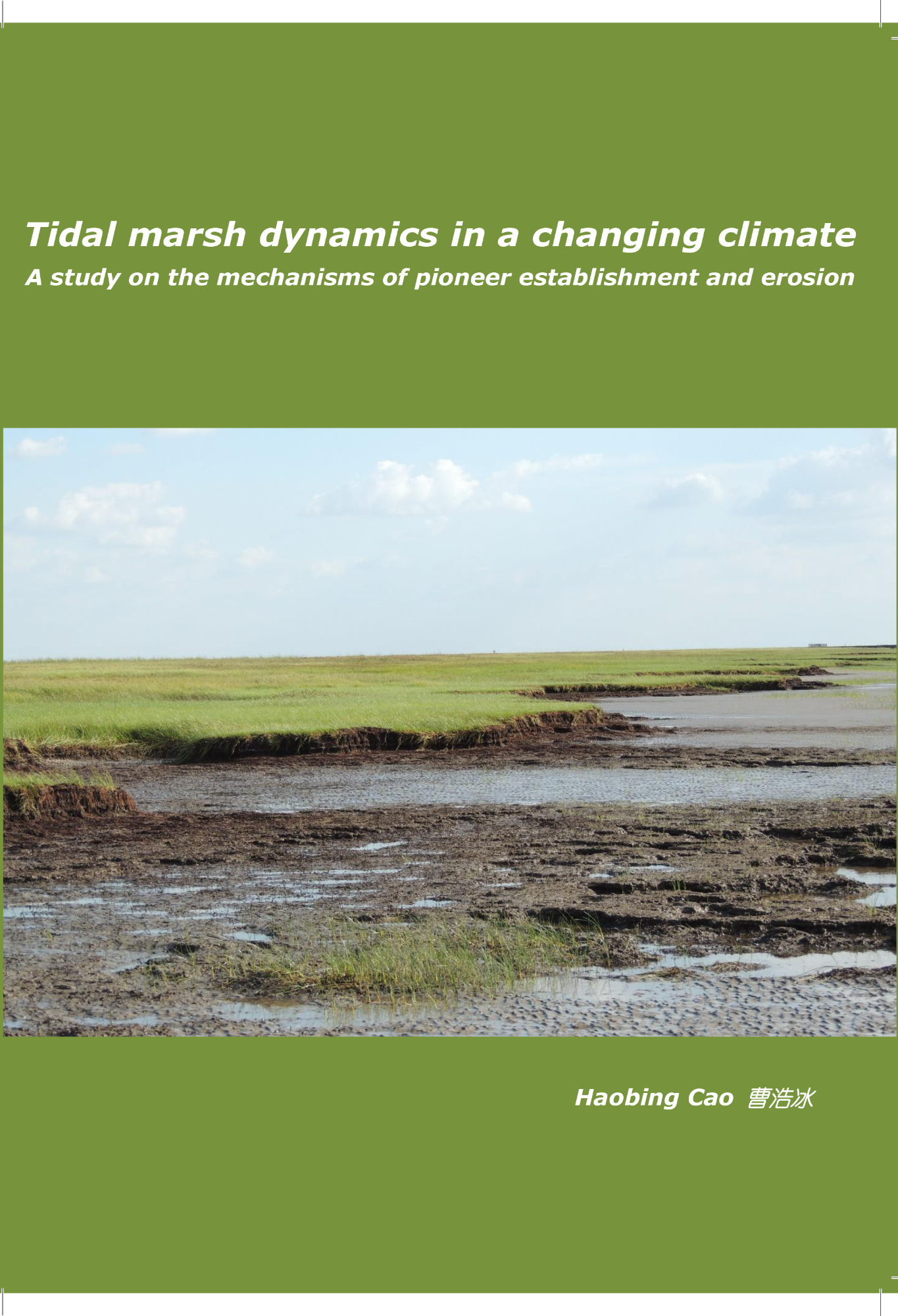Detailed insights into the growth and erosion of tidal marsh

Protecting millions of people worldwide
“Worldwide, tidal marshes can protect millions of people from flooding in this era of rising sea level. By using tidal marshes for coastal protection, you can reduce the height of dikes, and provide ecosystem services at the same time. However”, says Cao, “over the last decades, due to human influences, the area of tidal marshes has been declining all over the world. I want to provide the key knowledge on how to restore and even how to grow new marshes.”
At the Royal Netherlands Institute of Sea Research (NIOZ), a lot of research is done into the viability of using tidal marshes as nature-based flood defense. In the Netherlands, such flood defense could be applied along muddy Wadden Sea coasts in the provinces of Groningen and Friesland, and in the Scheldt estuary of Zeeland and the southern part of South-Holland. With his PhD thesis, Haobing Cao, who was appointed in a collaboration between NIOZ and the State Key Laboratory of Estuarine and Coastal Research in Shanghai, contributed significantly to the fundamental knowledge that enables the creation of so-called ‘living dikes’.
Disturbance-free period is rare but essential
In his PhD-research, Cao studied several factors that influence the growth of several pioneer marsh species, like the exposure to waves or the exposure to erosion or accretion of sediment. For the latter, Cao set up an experiment exposing hundreds of plants to alternating conditions of erosion and accretion. Doing so, required a lot of hard work each day, and resulted in unique novel insights.
“In the lab at NIOZ in Yerseke, I found out that the cord grass (Spartina) seedlings profit from a disturbance-free period. Such a ‘window of opportunity’, which in natural situations may occur only once every decade, enables seedlings to grow the long roots needed to anchor into the unstable mud. By understanding how seedlings establish in natural situations, we gain insight in how to optimize the conditions needed to create and optimize marshes.” The large number of unique data collected by Cao made this work highly cited by colleagues and even inspired a modeler to use his results to develop a machine learning model on marsh developments under climate change.
Conditions for cliff formation
“To be able to use marshes for flood safety, you need wide marshes”, Cao says. “So in addition to understanding the factors driving seedling establishment, it is important to understand what determines when they start to erode, and how this varies between different salt marsh species. For example, cord grass marsh edges (Spartina anglica) may erode steeply, forming so-called ‘cliffs’ of up to one meter in height. Such cliffs are not found for sea clubrush (Scirpus maritima).” Cao’s experimental work provided detailed insights into what conditions result in cliff formation and which plant traits make some species more vulnerable to cliff formation than others. This opens up a completely new direction in marsh research.

On Wednesday 27 October at 10:15 am, Haobing Cao is defending his dissertation titled ‘Tidal marshes in a changing climate’ online at Utrecht University. You are most welcome to join the online defense
